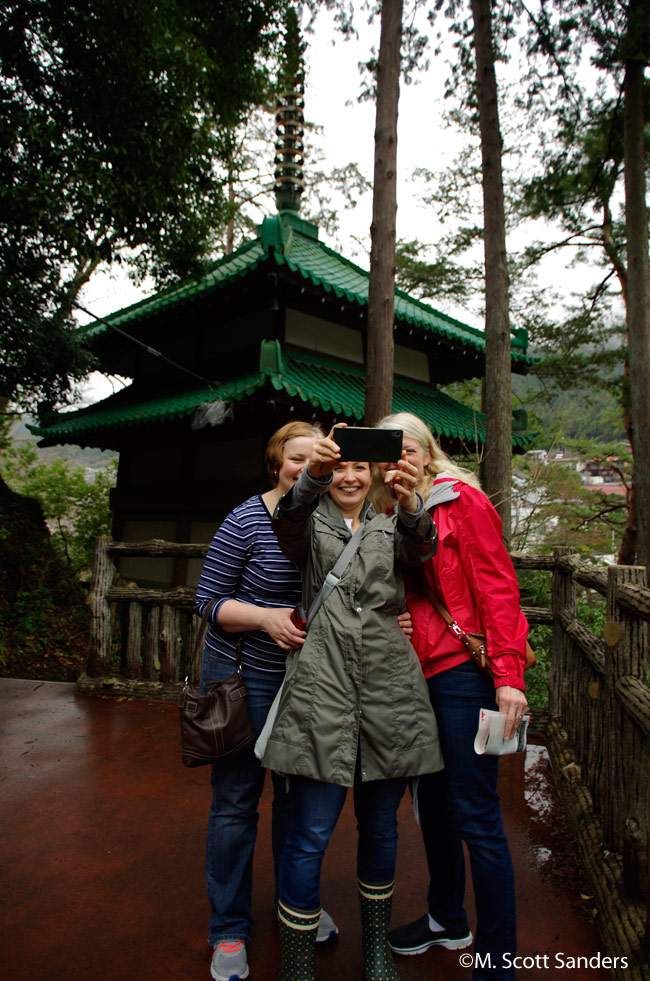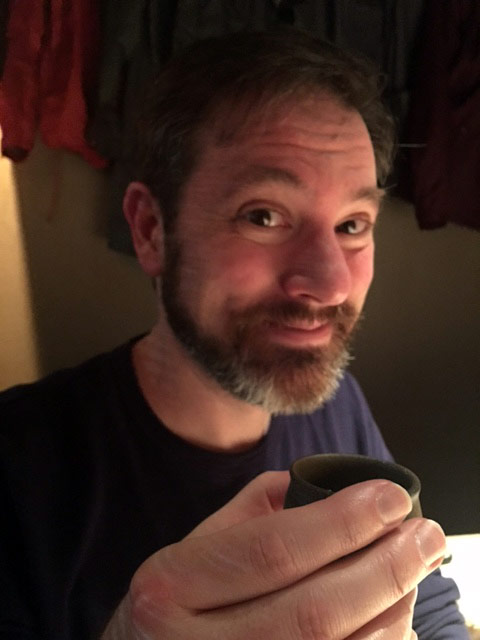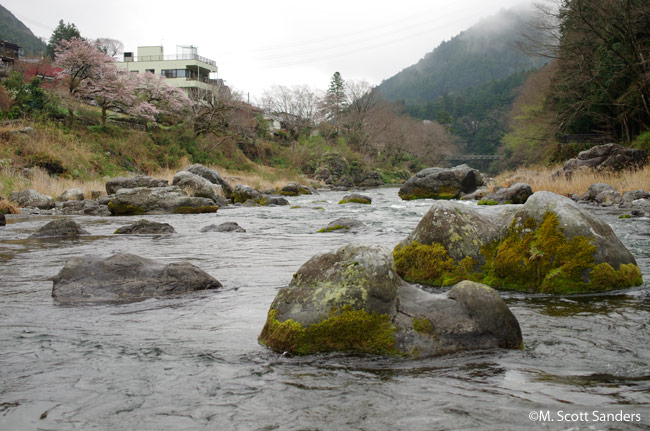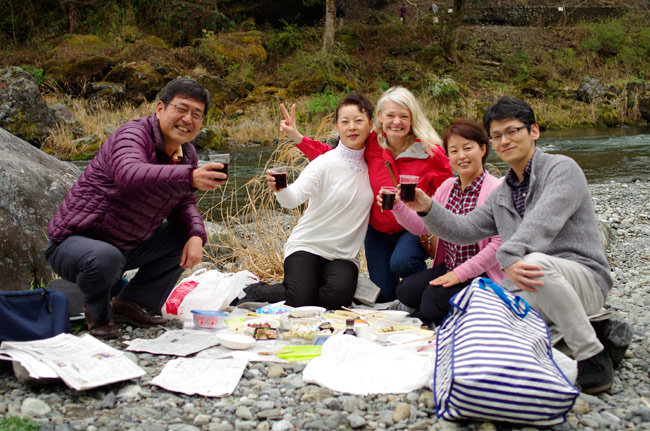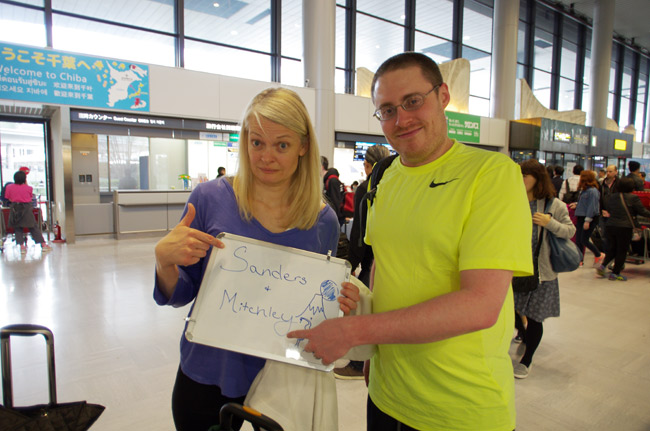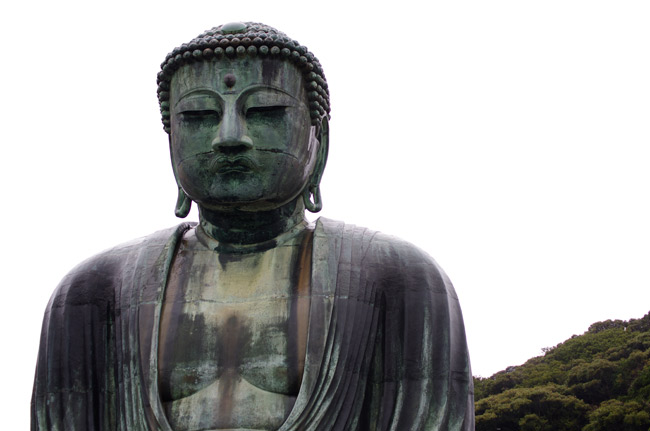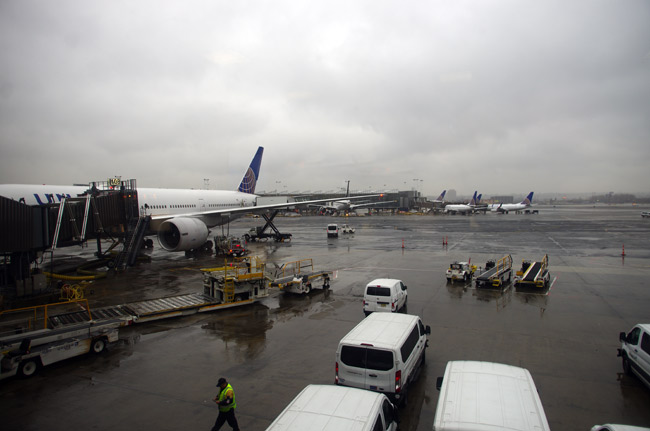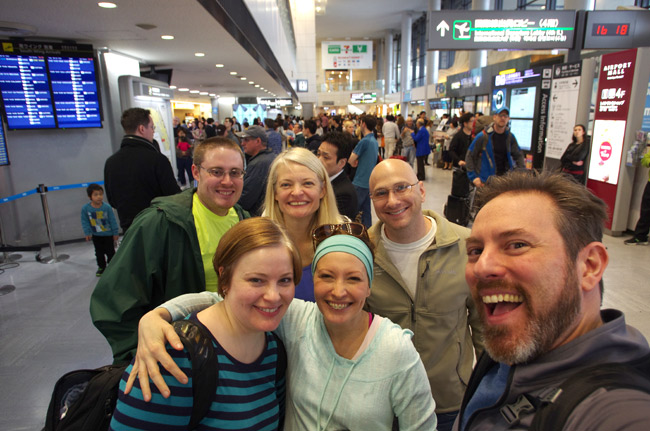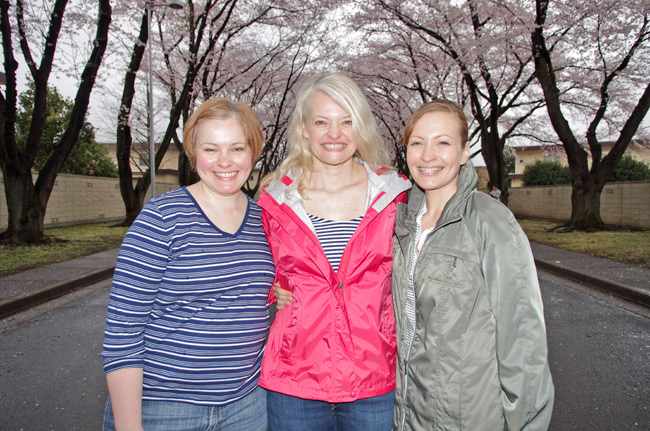One year for New Year’s, we went to a Japanese place in Bethlehem, called Kome. We had been there a few times before, and thought the hibachi would be just the thing for the family. Rachel and Derek came, Laura’s aunt and uncle and her cousin, and we couldn’t have made a better choice. We sat around the grill, watched the chef prepare the food, send random streams of sake in our directions, do the onion volcano, all the things that we come to know and love from this type of experience. We all had a great time and had good food.
If you were to have asked me then, on that night, if that was what eating in Japan was like, I would have said, “No, probably not.” And I would have been right. And wrong.
Again, not that I’m suddenly an expert on Japanese food. It’s just that now I have an idea of what Japanese food can be. For instance, one of our first outings was to the Ramen Museum, north of Yokohama, which Hannah chose specifically because a) it’s interesting to look at, b) because they have several different ramen vendors there, and c) because a couple of vendors have gluten-free ramen, which allowed her and Laura to indulge.
The Ramen Museum has an elaborate set-up to look like a stylized version of a 1950’s Japanese street, complete with movie advertisements and signage. Each one of the storefronts is a ramen restaurant.
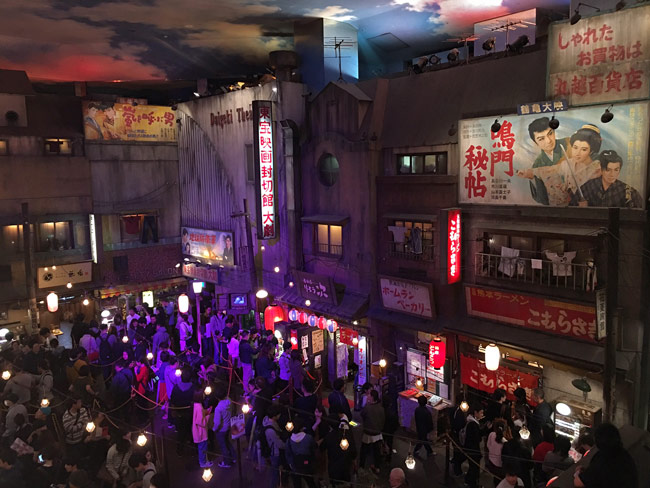
Ramen. Most of us know it as that thing that kept us from starving in college. My mother was one of the first to get addicted to instant ramen when they made their way west, so we would always have a few packets on hand, although I could take or leave them, honestly. If you were to ask me then if that’s what eating ramen in Japan was like, I’d say probably not. And I’d have been right. And right again.
And wrong, possibly, since those same ramen packets exist in Japan as well. I suppose it’s the difference between Steak-Umm and an actual Philly cheesesteak. You don’t always have time for the real thing.
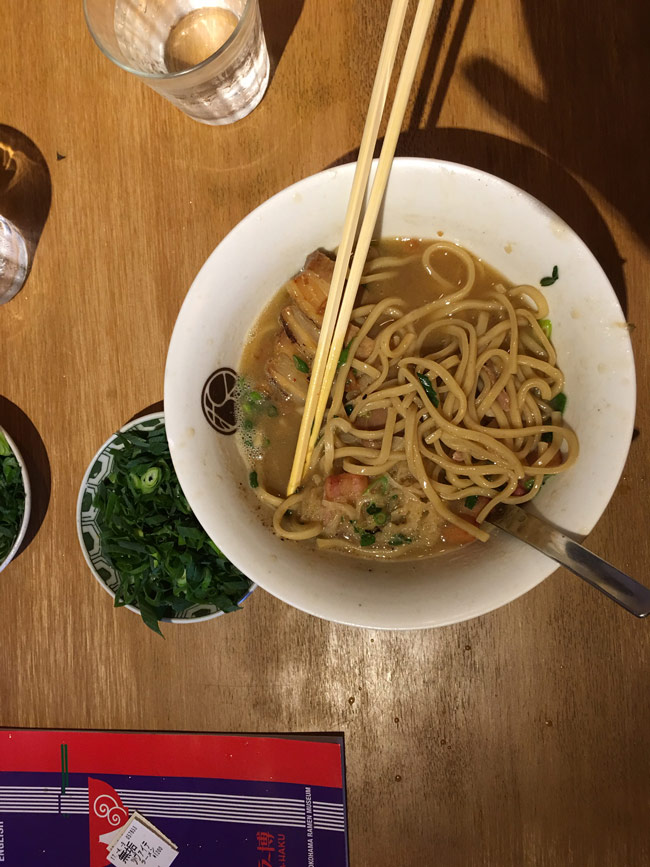
Oh, but you should make time.
Ramen shops are no-nonsense affairs. You punch in what you want into a machine, you sit down, they bring it to you. Slurp, slurp, slurp and you’re out of there. In between, though, there is broth that no packet can recreate, pork, eggs, green onion. Noodles of varying size, depending on the place. At this shop, the thicker noodle was more to their liking, and to mine.
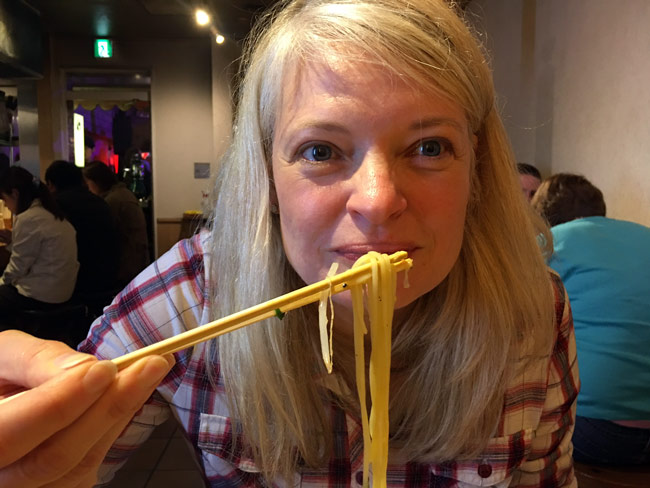 And to Laura.
And to Laura.
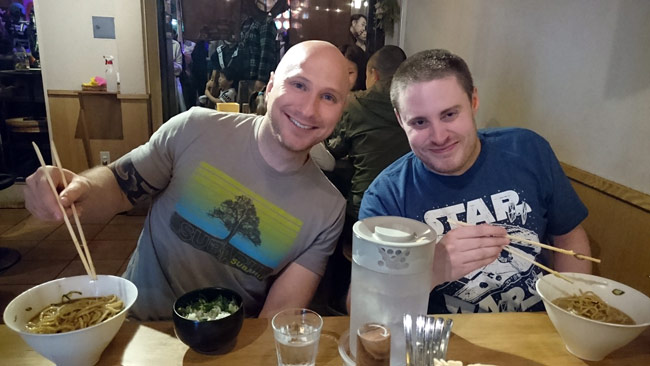 And to these guys.
And to these guys.
To be honest, it was confusing, and eye-opening. I knew ramen, the real ramen, was much better, and different, but this so outclassed those packets designed to stave off collegiate starvation, it defied logic.
But some similarities remained, despite how different the taste quality: ramen is still treated as the ultimate utilitarian food. Get in, fill up, get out, all good. Wasn’t there supposed to be some kind of interaction, some talk around the table, just like we had at Kome back home while fire rises out of onions on a grill? Of course not, because that’s how ramen is. But instead of a cramped and crowded dorm room, it’s a cramped and crowded shop.
That’s when it became obvious: the Japanese food we know is just a rumor of the real thing. An echo. Not necessarily untrue, but incomplete. The picture is not fully developed.
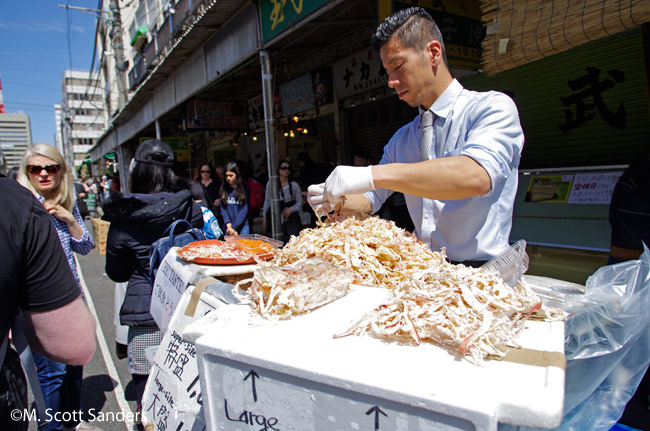
First of all, the ingredients. Hannah took us to Tsukiji Market, possibly the foremost fish markets in the entire world. Everything is fresh, everything is amazing, and so much is unique. We got some dried scallops from a vendor here. These scallops could probably be replicated in, say, Florida, but they would come out all different.

We ate lunch at Sushizanmai, which has a very good reputation. I’m not a sushi guy. I can eat it, and I won’t outright refuse to eat it, but given other options, I will generally eat something else. Laura would eat sushi for every meal until she grew gills. My expectations weren’t terrifically high, but I expected better than the average California roll.
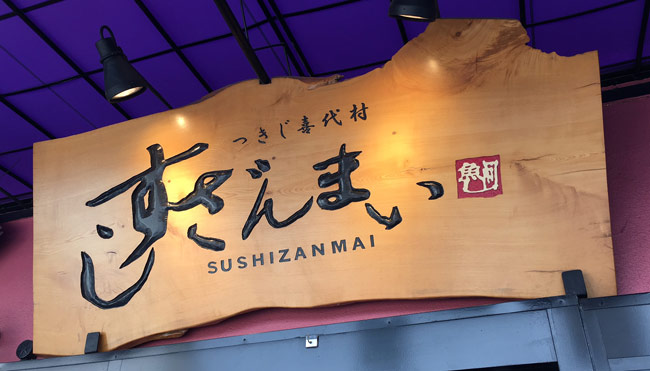
We ordered—well, Hannah ordered—and they came back with a platter of their finest. Here’s my first look at actual Japanese sushi:
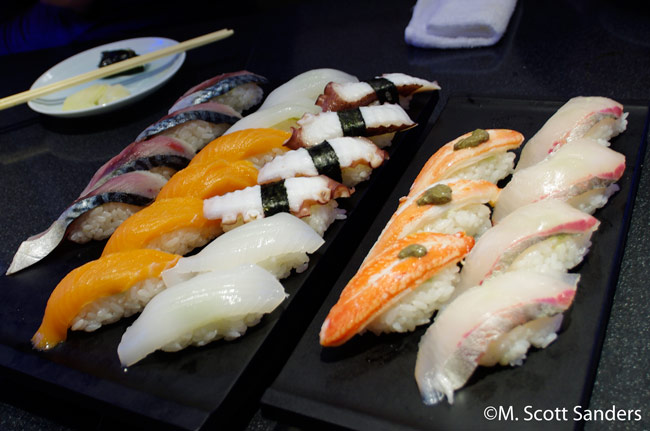 That would be different. I’ll have some of that, thank you.
That would be different. I’ll have some of that, thank you.
The shocker for me was this: the quality of the fish was much better, take that for granted, but the quality of the rice was what set it apart. Rice, at its worst, is mushy and tasteless. This was firm, flavorful, and the perfect complement to the fish. Again, it wasn’t startling to find that it was better, but that it was so much better.
And here, we could talk, we could laugh, we could enjoy ourselves, much as we might as if we were eating sushi back home. There was a family seated next to us, and just like we had seen on the riverbank a few days earlier, the mother of the family was trying to take a picture. I wandered over and offered to take it for them, so they could all be in the shot. And once that was done, she offered to take a picture of us.
The reaction you see, especially out of me, is the result of her saying, just before she snapped this, “Say cheese!”
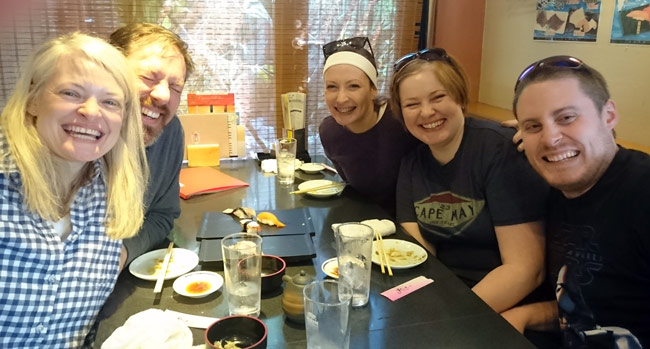
However, when it comes to the difference in American ingredients used in Japanese cooking and Japanese ingredients, there is no greater gap than in the quality of beef. We’ve all heard that Japanese beef is better, but we really don’t want to believe it, considering we produce and eat more beef than we know what to do with. Wagyu beef, blah blah blah, cows getting massages and their hooves done, whatevs.
No, no, you don’t understand. Their run-of-the-mill beef is probably better than our best.
One night, after the evening’s festivities (which will be detailed in a future post) we finally ended up in a Yakuniku place. It was down this marvelous little street that barely seemed large enough for a scooter, much less a car. The entire menu was in Kanji, no English translation for the American tourists. Hannah got her phone out and did Google Translate on it. We determined that we would order meat to put on our grill. Much meat. Lovely happy beefy meat.
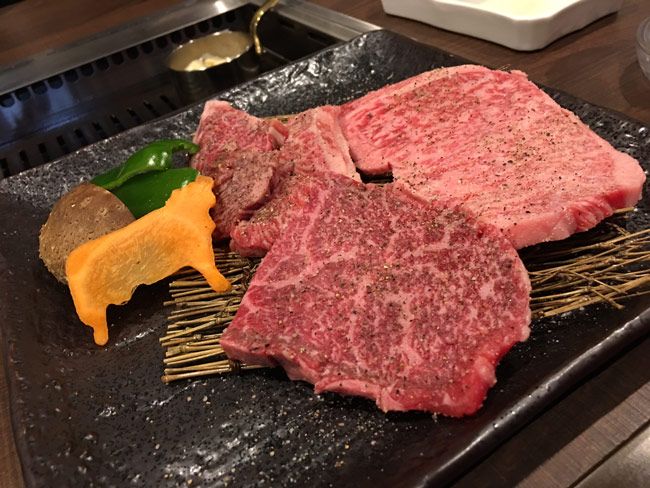 And before you ask, yes, that it is a carrot in the shape of a cow.
And before you ask, yes, that it is a carrot in the shape of a cow.
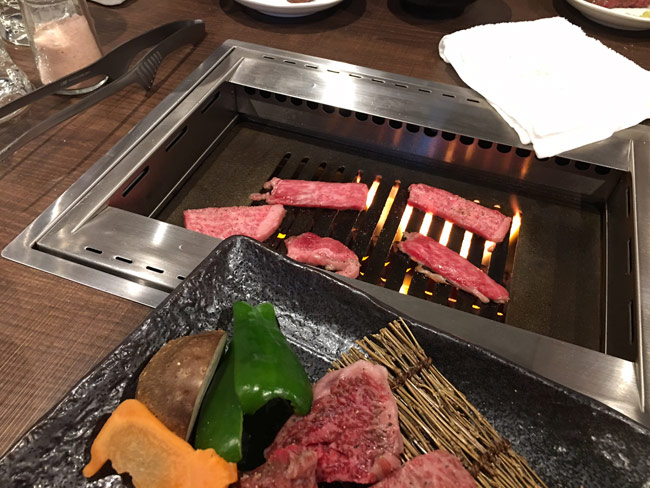 On the grill it went, and after that, we filled up our happy faces with it. This was my first taste of real, honest-to-goodness Japanese beef in all its splendor, and as it floated downward to my bottomless steak repository, I wondered what American cows were doing wrong. They clearly don’t want to be this delicious. Sure, it’s hard work, but the Japanese cow is up for the task.
On the grill it went, and after that, we filled up our happy faces with it. This was my first taste of real, honest-to-goodness Japanese beef in all its splendor, and as it floated downward to my bottomless steak repository, I wondered what American cows were doing wrong. They clearly don’t want to be this delicious. Sure, it’s hard work, but the Japanese cow is up for the task.
The first order was not enough, so we pointed at the menu and said onegaishimasu, and magically, more beef arrived. This was different beef, because we had pointed at some other part of the menu. Tastier, perhaps? It was tough to tell, having slipped into a beef trance.
After it was over, we slipped into the night. Sadder? By no means. Wiser? By leaps and bounds. We had fully known beef and all its ways.
Or maybe not.
The last night, Hannah and Dan wanted to take us to the Imperial Hotel. There, we would have the Japanese steakhouse experience, only this time, for realsies. No onion volcanoes here, my friend. (I realize I’m channeling my inner Bourdain here, but stick with me).
They seat us in the familiar setting: table on three sides, and in the center, a scalding-hot slab of steel. Behind us, other people are seated around a similar slab of steel. Their food is being prepared already. The chef is serious. He’s not going to send a shrimp as an airborne missile toward some patron’s face, not this guy. All business.
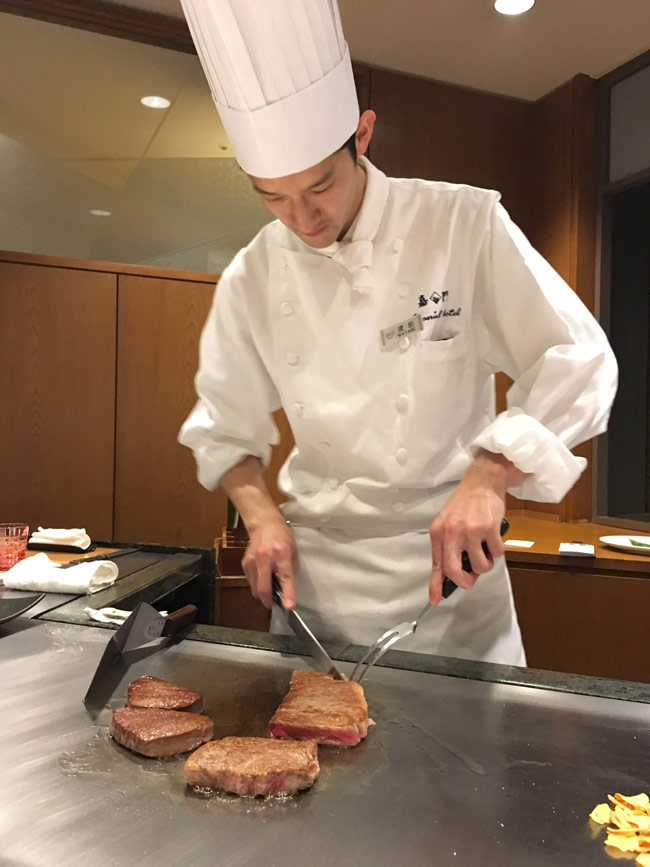
Our chef shows up, a younger man. His name is Watabe. My guess is they chose him for the American tourists because they are used to a little personality with their meal on such occasions. He’s got a gleam in his eye like he’s been practicing some knife flips, but he’s not going to do them here. He has to be all business.
Out the window, there’s the light of an office building. One light in one square, with the silhouette of one man behind a desk. It’s after 7:30.
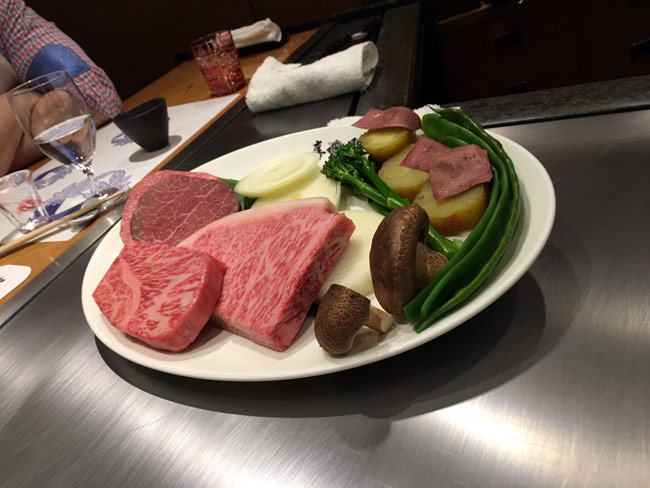
This is what the beef looked like before it went on the grill. And this…
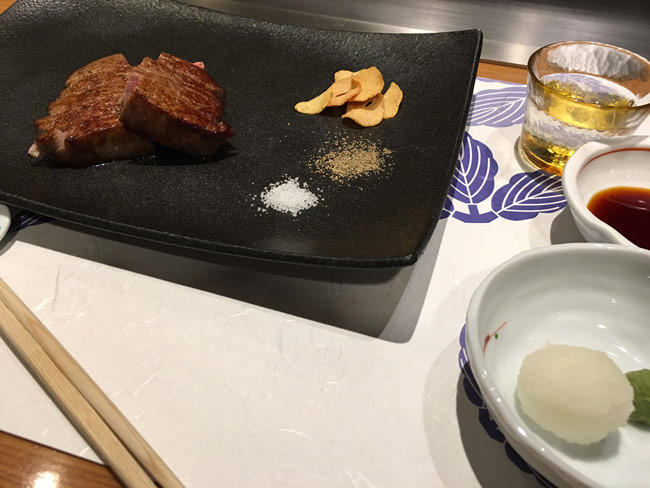 …is what it looked like after. A marvelous thing, prepared expertly. The time it takes to do what Watabe does is truly amazing.
…is what it looked like after. A marvelous thing, prepared expertly. The time it takes to do what Watabe does is truly amazing.
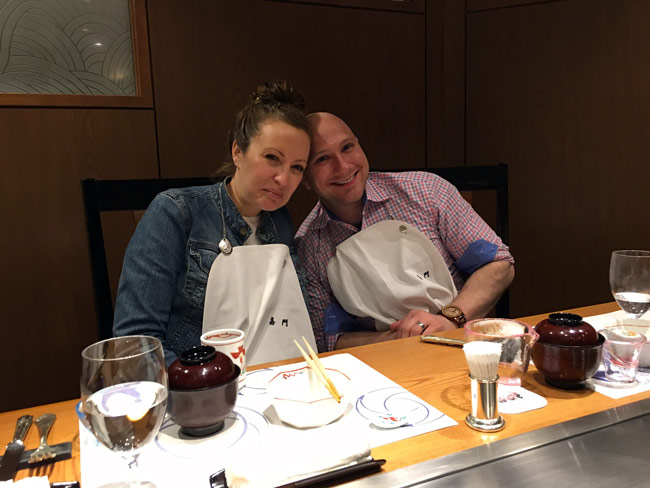
We ate and enjoyed ourselves, while the man in the office building continued to work within the confines of his lit square. It was 9:00, 9:30, and he was still there. I tried to take a picture of this, but I only had my phone, and the reflection in the window would not allow it. Finally, when we got up to leave, we noticed the one light in the building was now out. The man in the office had worked until 10.
Tipping is not a tradition in Japan, and in fact, Hannah told us it’s frowned upon. The reason is this: if you tip someone, you are looking down on someone else’s work. But it works both ways. That night at the Imperial Hotel, everyone, and I mean everyone, treated us as if we were royalty, and they weren’t fishing for tips. They worked hard. They had pride in their work, and you could see that.
Just like the man working in the building. Just like the farmer that produced the beef, just like the man who caught the fish we had at Tsukiji Market. They all share that same intense pride. And when there is so much work that goes in to not only the preparation of the food, but the preparation of the preparation of the food, it cannot help but be great.

We all had a good laugh when those Ruby Roman grapes went for $11,000 at auction in Japan last year. They’re just grapes, after all, we think. I can get a bunch at the grocery store for 4 bucks. But that’s just it, it’s more than that. Someone put obsessive effort into producing those grapes, to ensure that they were the highest quality, best-tasting, knock-your-brains-out good grapes. It’s not just food, it’s a work of art. In that context, spending five figures on fruit makes sense.
We thank everyone who fed us while we were there in Tokyo. Thank you doesn’t even cover it. Nor does arigato gozaimasu, but it will have to do.
ありがとう ございます

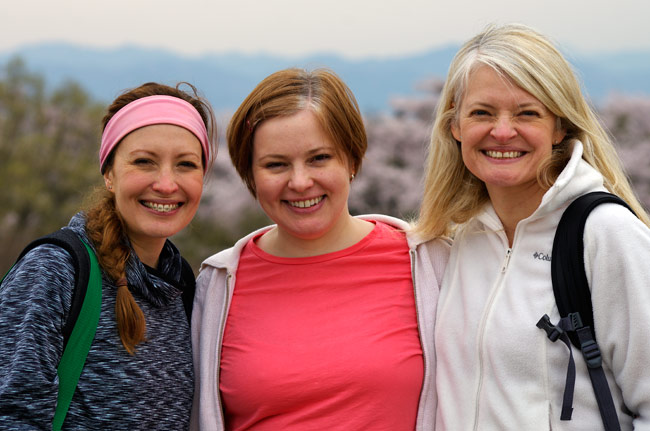

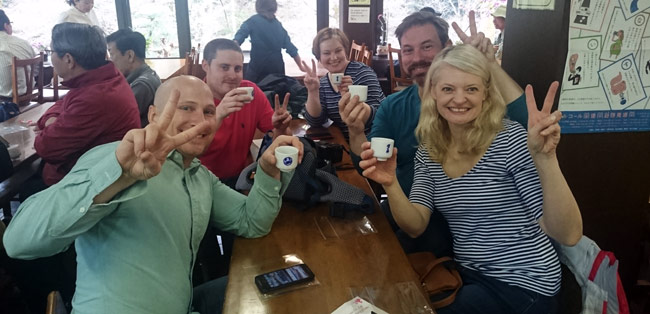
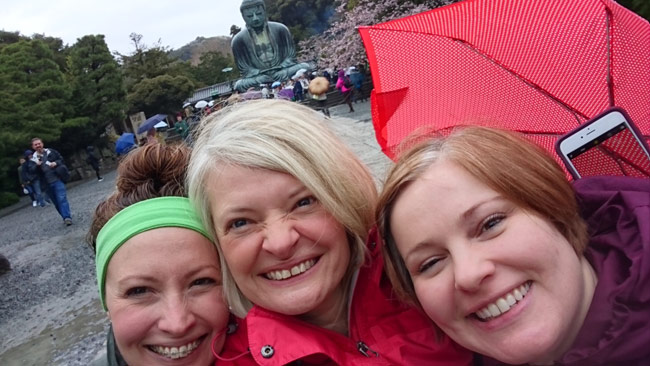

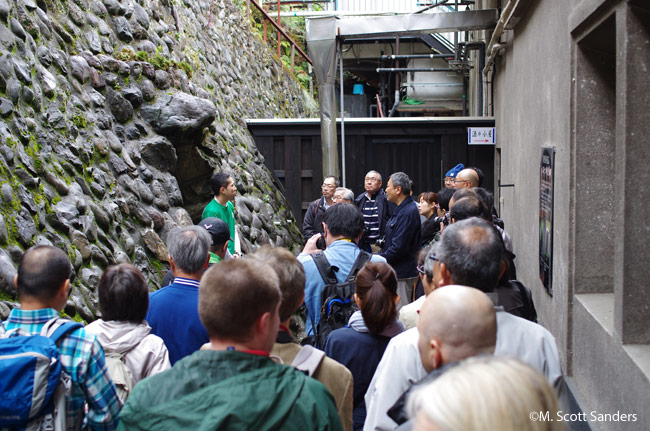
 There was a helpful flyer in decent English to let us know a good bit of what was going on. We went to the room where the rice was processed and to the cave where they gathered the water. Everyone was Japanese, apart from the six goofy Americans. It was hard not to feel so different, so out of place.
There was a helpful flyer in decent English to let us know a good bit of what was going on. We went to the room where the rice was processed and to the cave where they gathered the water. Everyone was Japanese, apart from the six goofy Americans. It was hard not to feel so different, so out of place.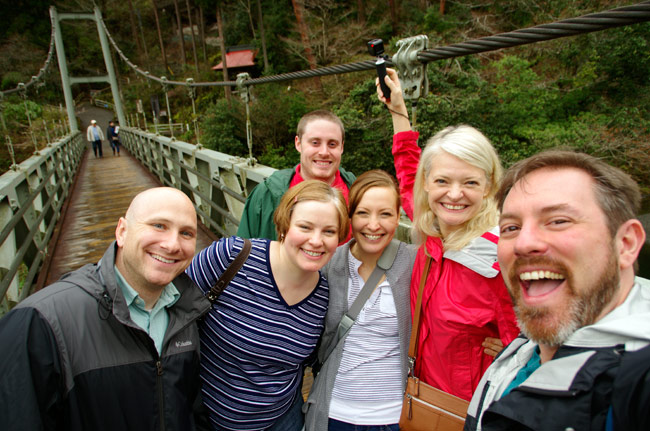
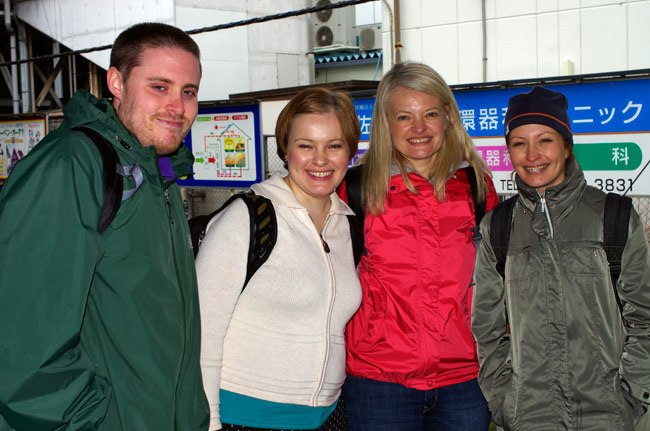

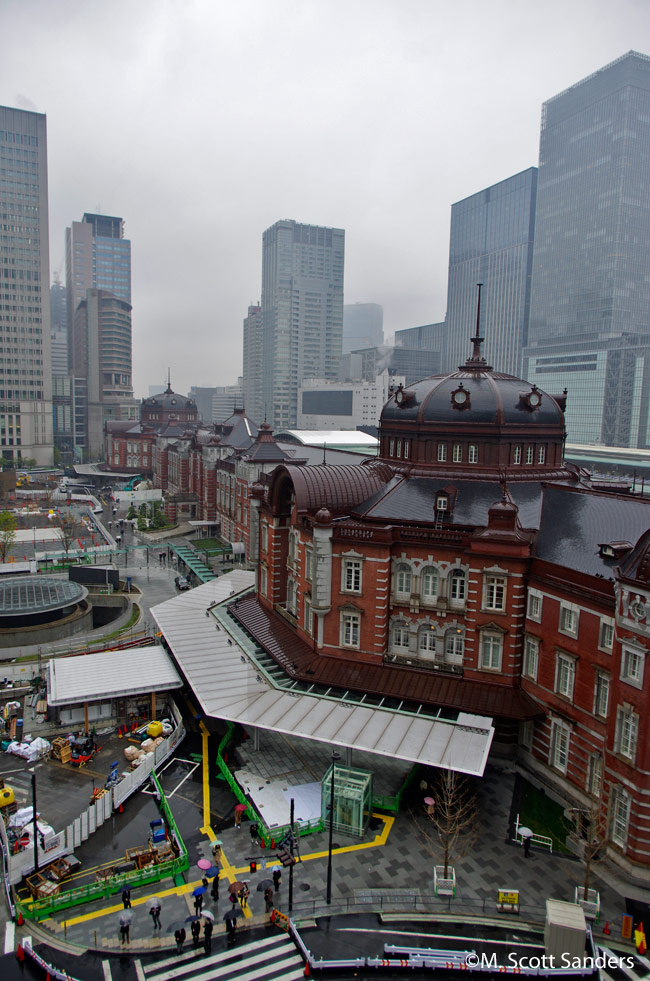 Hannah was relying on Google Maps to get us around. Normally, Google Maps are very reliable, but in Tokyo, walking directions can change at a moment’s notice. We stumbled out into the rain after Hannah, who went one way, and then another, and then yet another, and then stopped. She would look at her phone, then look up, and then back at her phone again, and then she went back the first way, and we followed her. We must have looked like we were terrible at collecting Pokemon.
Hannah was relying on Google Maps to get us around. Normally, Google Maps are very reliable, but in Tokyo, walking directions can change at a moment’s notice. We stumbled out into the rain after Hannah, who went one way, and then another, and then yet another, and then stopped. She would look at her phone, then look up, and then back at her phone again, and then she went back the first way, and we followed her. We must have looked like we were terrible at collecting Pokemon.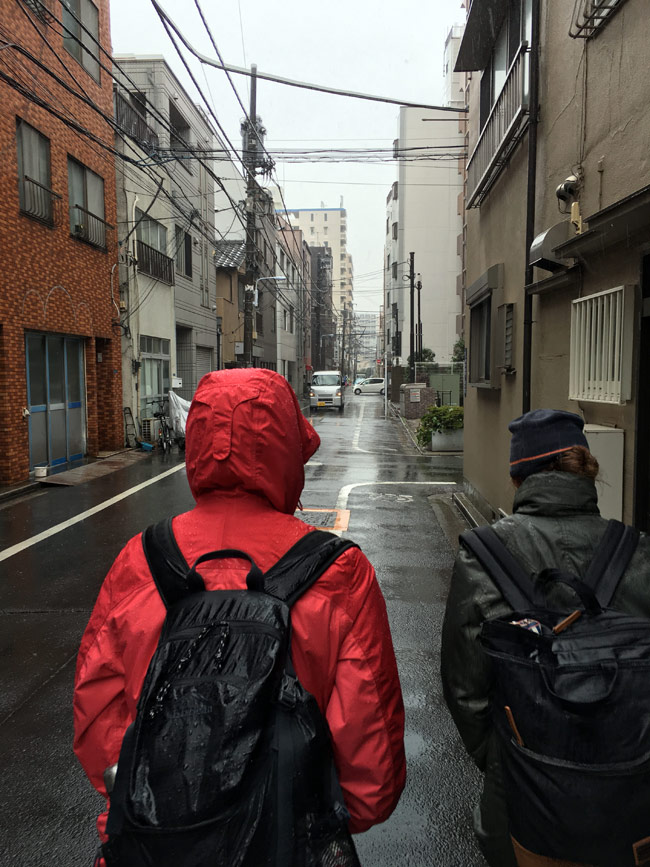
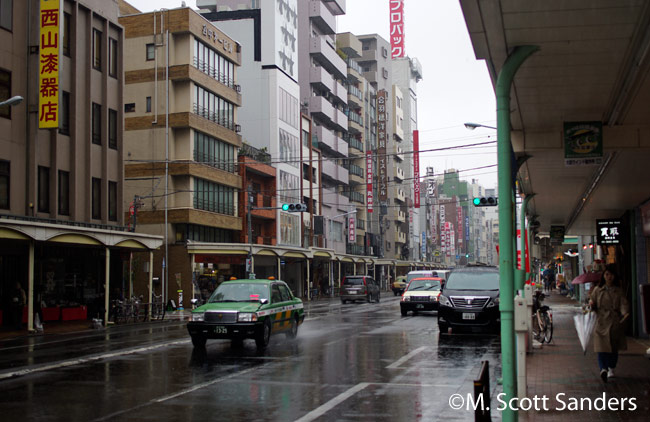 Fortunately, the sidewalks were (mostly) covered, so we could somewhat dry out. The stores varied, from the superior-serious big-ticket items to uniforms to the items that were probably geared more for the tourists. There were more western faces here. Some Americans. Australians. French.
Fortunately, the sidewalks were (mostly) covered, so we could somewhat dry out. The stores varied, from the superior-serious big-ticket items to uniforms to the items that were probably geared more for the tourists. There were more western faces here. Some Americans. Australians. French.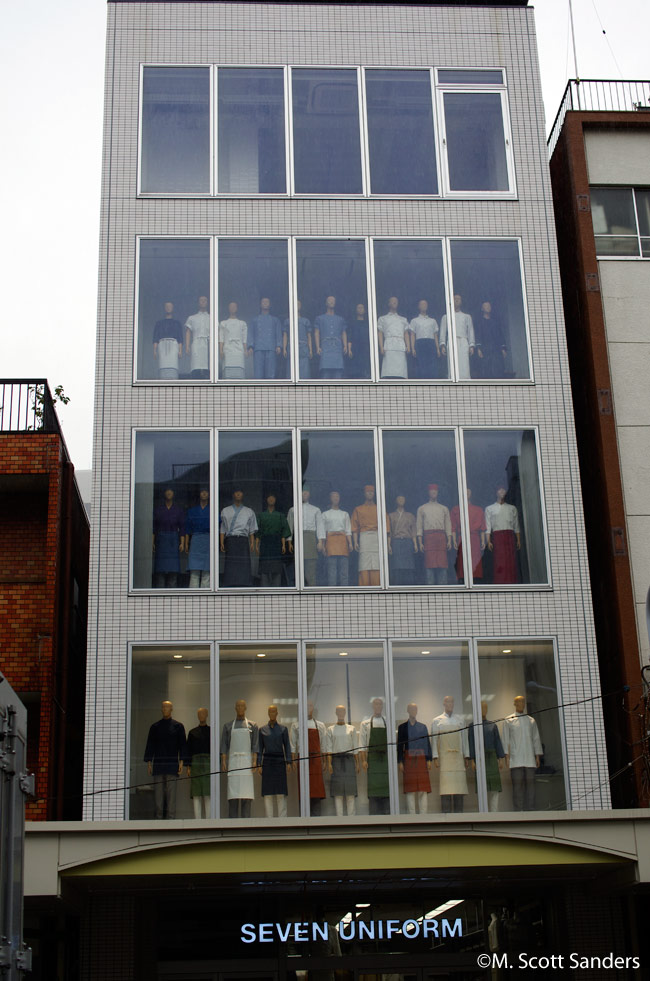

 The cherry blossoms were in full bloom in Ome as we climbed the steps to the shrine across from the Sawanoi Brewery. The rain was holding off that day, but there was a layer of fog at the edge of the tall hills on either side of the river. All six of us could stay in our comfort zone as long as we kept moving. I took another 300 pictures.
The cherry blossoms were in full bloom in Ome as we climbed the steps to the shrine across from the Sawanoi Brewery. The rain was holding off that day, but there was a layer of fog at the edge of the tall hills on either side of the river. All six of us could stay in our comfort zone as long as we kept moving. I took another 300 pictures.